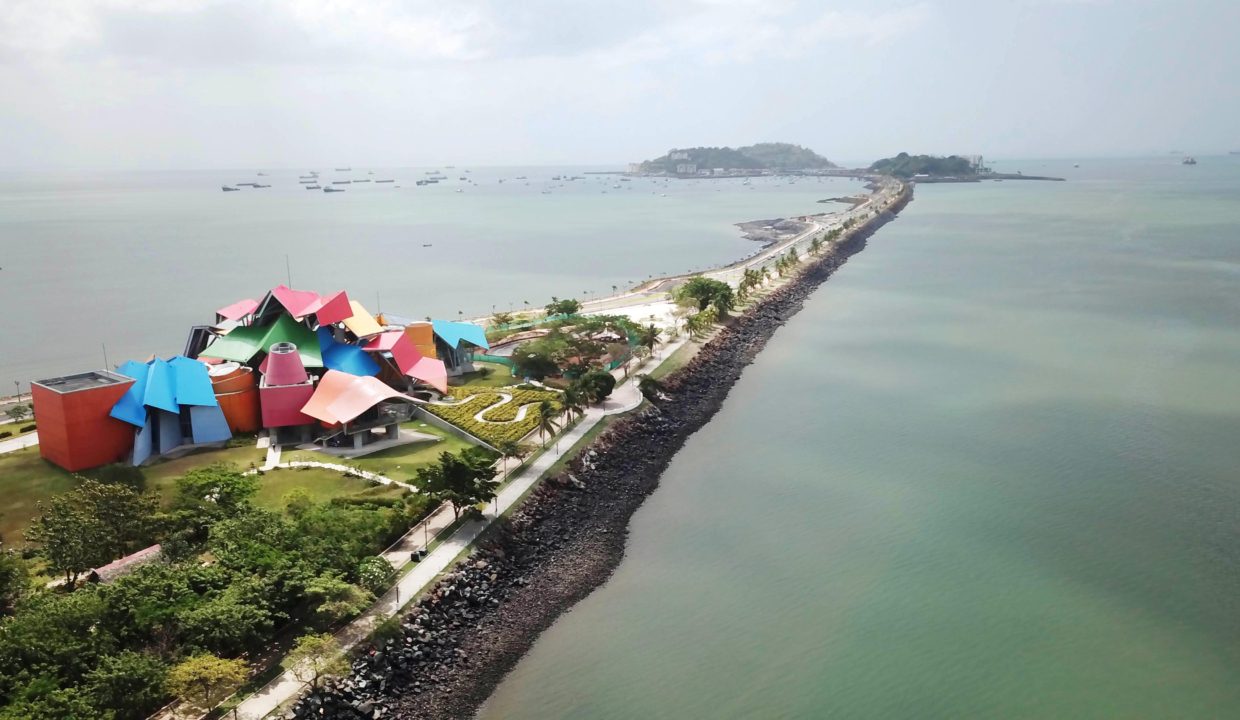
Recently, we posted an article of nine ways you can enjoy the Amador Causeway. It wasn’t a ranked list, but the Biomuseo was the first activity we discussed and for good reason. It is an absolute must for anyone living or visiting Panama City. More than just an architectural marvel, the museum unveils the captivating history of Panama through visual depictions and three-dimensional exhibits. For those that are new to Panama or thinking of moving here, the BioMuseo will expedite your knowledge into the history and formation of this incredible country!
Located at the foot of the Amador Causeway, the Biomuseo is pretty hard to miss. The vibrantly-colored roof panels mix and match into radical shapes, and weave around angles, edges, and columns. The uncommon design was built in the imagination of a prominent figure. A Canadian-born, American architect by the name of Frank Gehry, who’s designed some of the most iconic buildings in the world. This, in fact, is his first and only design in Latin America. If you’re wondering why Panama, perhaps his Panamanian wife had something to do with it. Nevertheless, he gifted the country with one of its most charismatic buildings.
What’s inside the BioMuseo Panama?
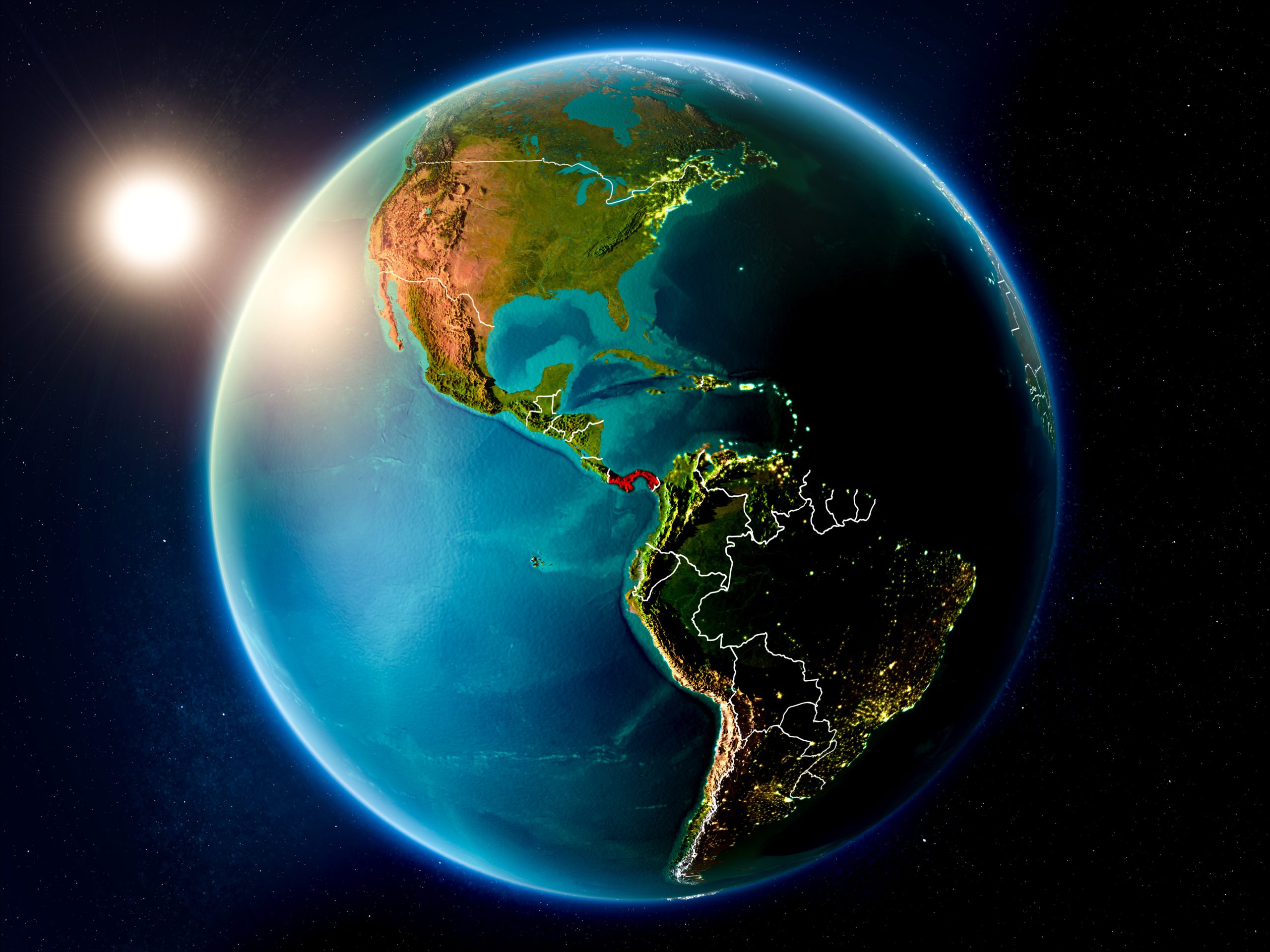
Sunset above Panama highlighted in red on planet Earth with visible country borders. 3D illustration. Elements of this image furnished by NASA.
The Biomuseo is a museum focused on the natural history of Panama, whose isthmus was formed very recently in geologic time, with a major impact on the ecology of the Western Hemisphere. Eight galleries show how the emergence of Panama changed the world 3 million years ago; the moment in time in which Panama rose through the sea and became the “Bridge of the Americas”.
The first exhibit is an artistic yet alarming showcase of Panama’s endangered biodiversity. A tactful display of wall plaques highlight the endangered species through various levels of severity; Ultimately serving as a reminder of the plants, animals, and biodiversity that need our attention. It’s here, however, that you’re able to recognize the incredible diversity of Panama’s wildlife. Did you know that blue whales migrate to Panama Bay for mating season? Neither did we! Until we learned at the Biomuseo, of course.
If you only speak English, don’t worry, all exhibits are in both English and Spanish. Some of the museum guides even know English as well.
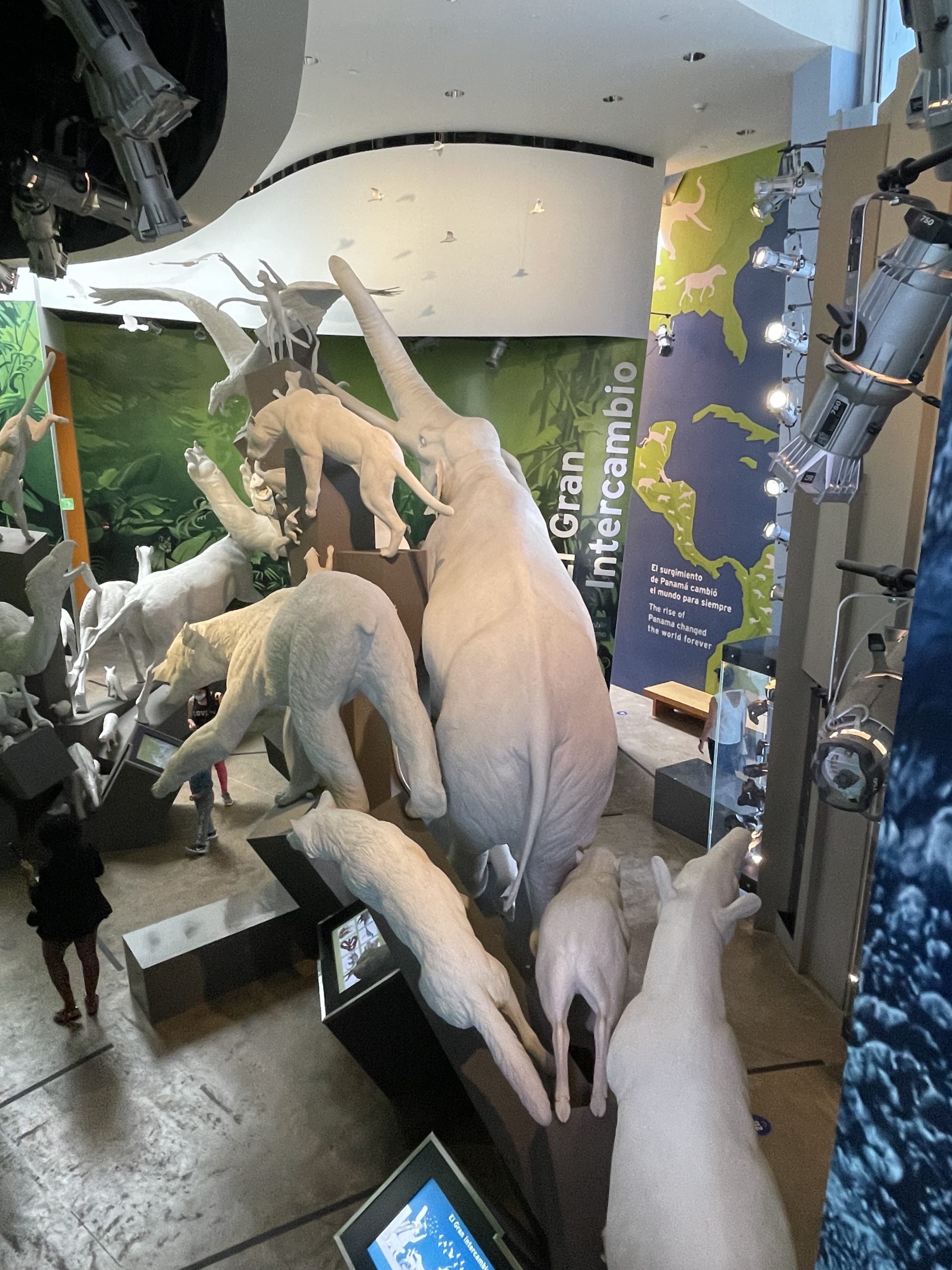 After the first exhibit, you’re free to mosey over to the “Panarama” and “Building the Bridge” exhibits. The former is a three-level projection space with ten screens, immersing you in an audiovisual representation of Panama’s ecosystems. The latter is a treasure trove of fossils, rocks, and rare animal bones that guide you through the geological formation of Panama. Some fossils are millions of years old! The cool thing is, the displays are accompanied by descriptions and stories which are fascinating in their own right. After that, you’ll pass through the jungle! Not literally, of course. But a collection of animal sculptures highlighting the 72 species of animals that started crossing the isthmus 3 million years ago.
After the first exhibit, you’re free to mosey over to the “Panarama” and “Building the Bridge” exhibits. The former is a three-level projection space with ten screens, immersing you in an audiovisual representation of Panama’s ecosystems. The latter is a treasure trove of fossils, rocks, and rare animal bones that guide you through the geological formation of Panama. Some fossils are millions of years old! The cool thing is, the displays are accompanied by descriptions and stories which are fascinating in their own right. After that, you’ll pass through the jungle! Not literally, of course. But a collection of animal sculptures highlighting the 72 species of animals that started crossing the isthmus 3 million years ago.
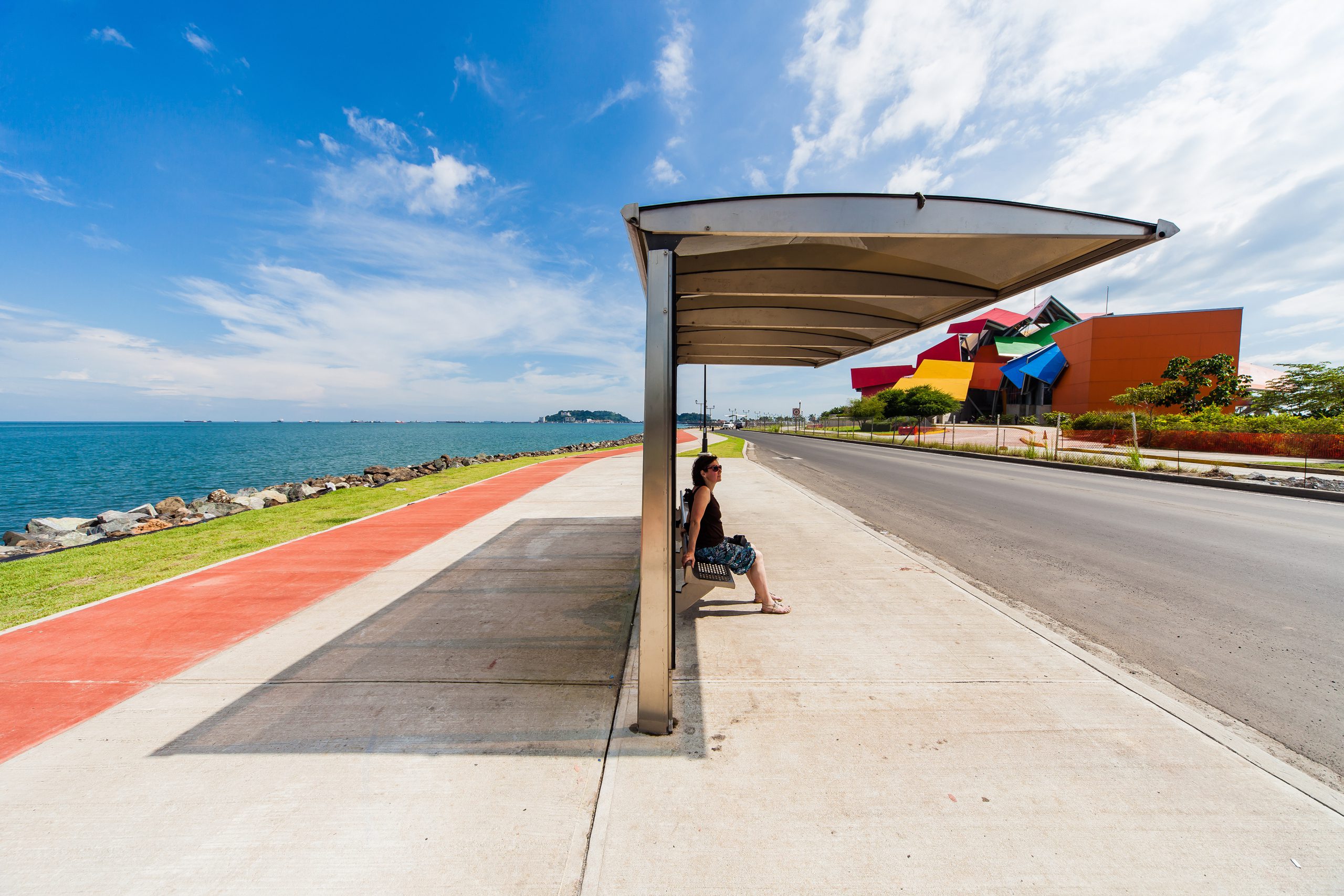
Now, before we dive into the most important exhibit, let’s discuss the logistics and pricing! As stated before, the museum is located on the Amador Causeway, which is on the Southern edge of Panama City just south of Casco Viejo. You can arrive here in a number of ways. For public transportation, there’s a bus stop conveniently called the BioMuseo bus stop that’s extremely close. The closest metro station would be 5 de Mayo, just north of Casco Viejo. From there, you can take a bus, taxi, or uber. The museum also has its own designated parking lot for vehicle owners.
Pricing is split into two categories, resident and non-resident. The Biomuseo charges a bit more for non-residents at $18/adult, $11/children & students, $16/seniors, and a special deal of 4 tickets for $40.00. Panamanians and residents are charged $10/adult, $6/children & students, $5/seniors, or 4 tickets for $24.00. These tickets give you access to all of the exhibits and features of the museum. Lastly, the museum is only open on weekend mornings and afternoons for the time being.
Ok! So now that you understand pricing and transport, let’s discuss the most important exhibit of all. The Biomuseo is a museum focused on the natural history of Panama. And one of the greatest forces in nature is humans. Thus, the Biomuseo would be incomplete without the story of humans and their role in the formation of the Panama we know today.
In an outdoor breezeway, shaded and with beautiful views of the bay, the Biomuseo built “The Human Path”. A collection of vibrantly colored pillars explaining the story of humans in Panama. The very beginning starts 15,000 years ago when the first arrival of humans set foot on Panama soil. Sixteen 4-sided pillars light up the breezeway with an incredibly interesting, chronological order of the condensed story. You could easily spend an hour at this one exhibit if you wanted to.
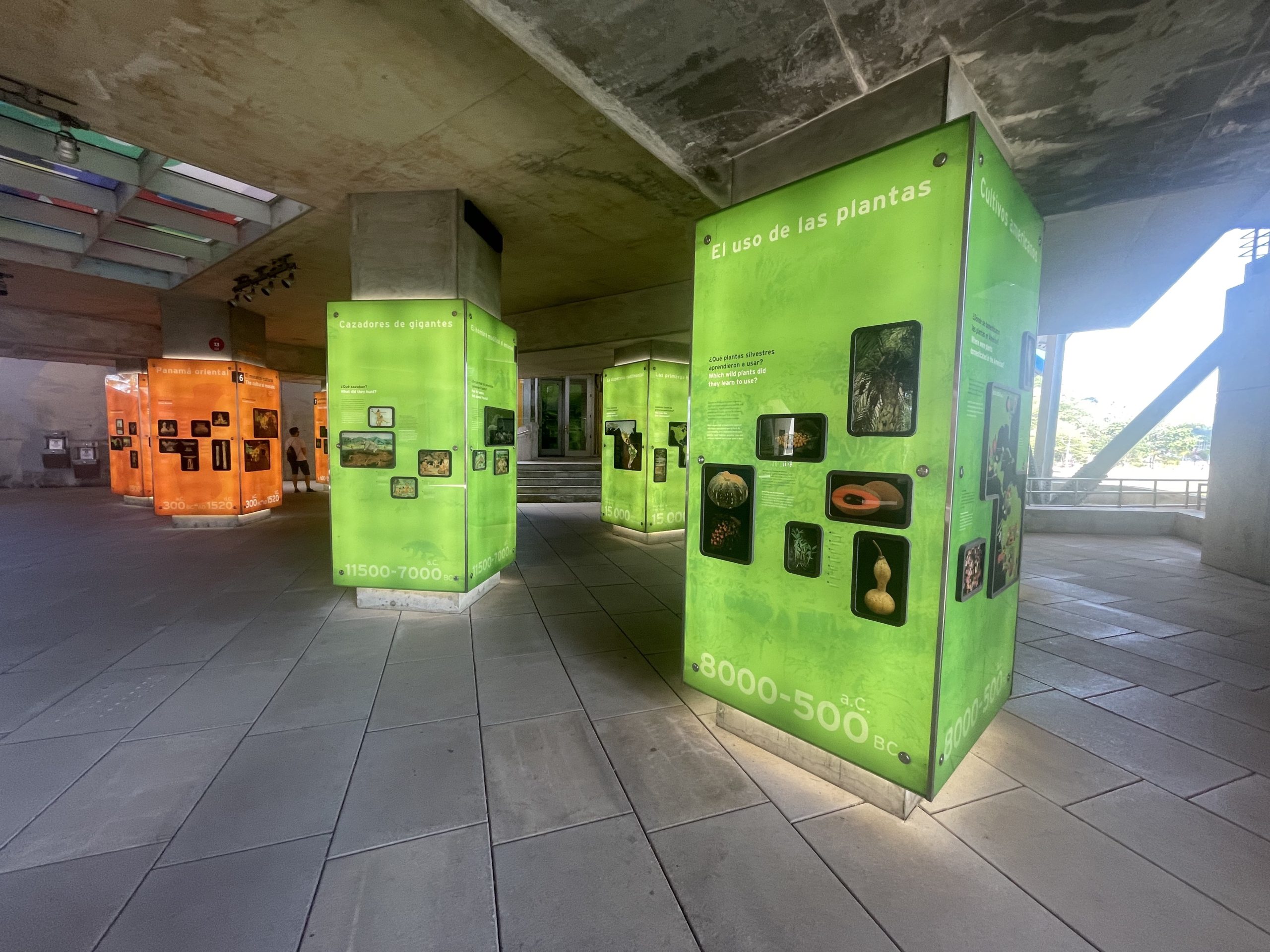 Culture in this beautiful country has been influenced and formed unlike any other in the world. With African, American Indian, North American, and Spanish influences, the end product is a diverse nation with a fruitful history. Displays like infamous wars, the building of the Panama Canal, the Scottish attempt at colonization, golden pottery, and South American fruits and vegetables are just a few of the contents on these magnificent pillars.
Culture in this beautiful country has been influenced and formed unlike any other in the world. With African, American Indian, North American, and Spanish influences, the end product is a diverse nation with a fruitful history. Displays like infamous wars, the building of the Panama Canal, the Scottish attempt at colonization, golden pottery, and South American fruits and vegetables are just a few of the contents on these magnificent pillars.
This one exhibit will accelerate your knowledge of Panamanian history in the utmost rewarding fashion. The awesome thing is, that is not even the end of the museum!
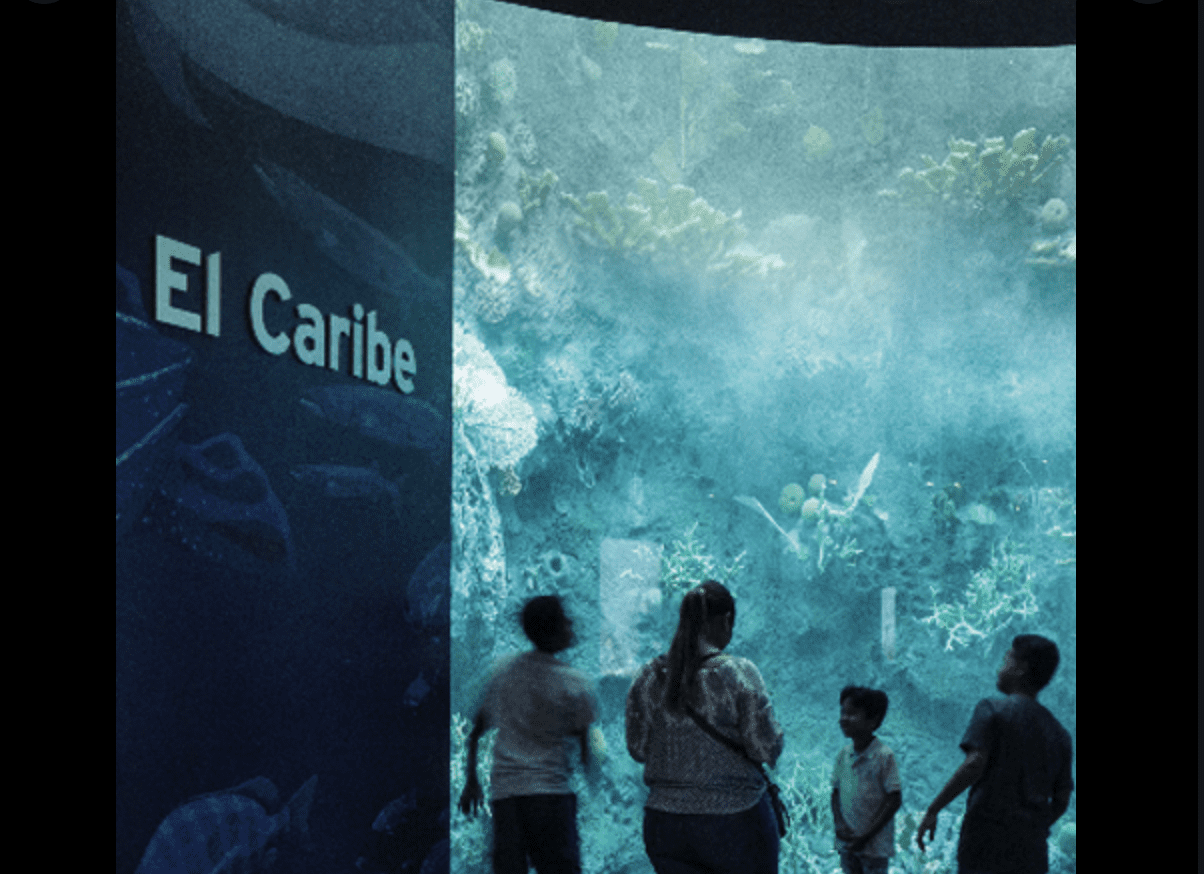
There are still multiple exhibits like the “Oceans divided” exhibit, featuring two different aquariums that show how the Pacific & Caribbean oceans dramatically evolved after the isthmus of Panama. There’s the “Living Web” exhibit, displaying plants, microorganisms, insects, and animals, and their reliance on each other for survival. And then finally, an exhibit with touch screen projectors and motion sensors share the relationship of biodiversity and cultural diversity in Panama. It’s here that you can learn of the Diablicos Sucios & many other cultural traditions in Panama.
Upon exit, you can stop in a temporary exhibit with random collections of natural history as well. We mentioned this just to show you the massive jaws of the megalodon shark! One of the highlights inside this temporary showcase.
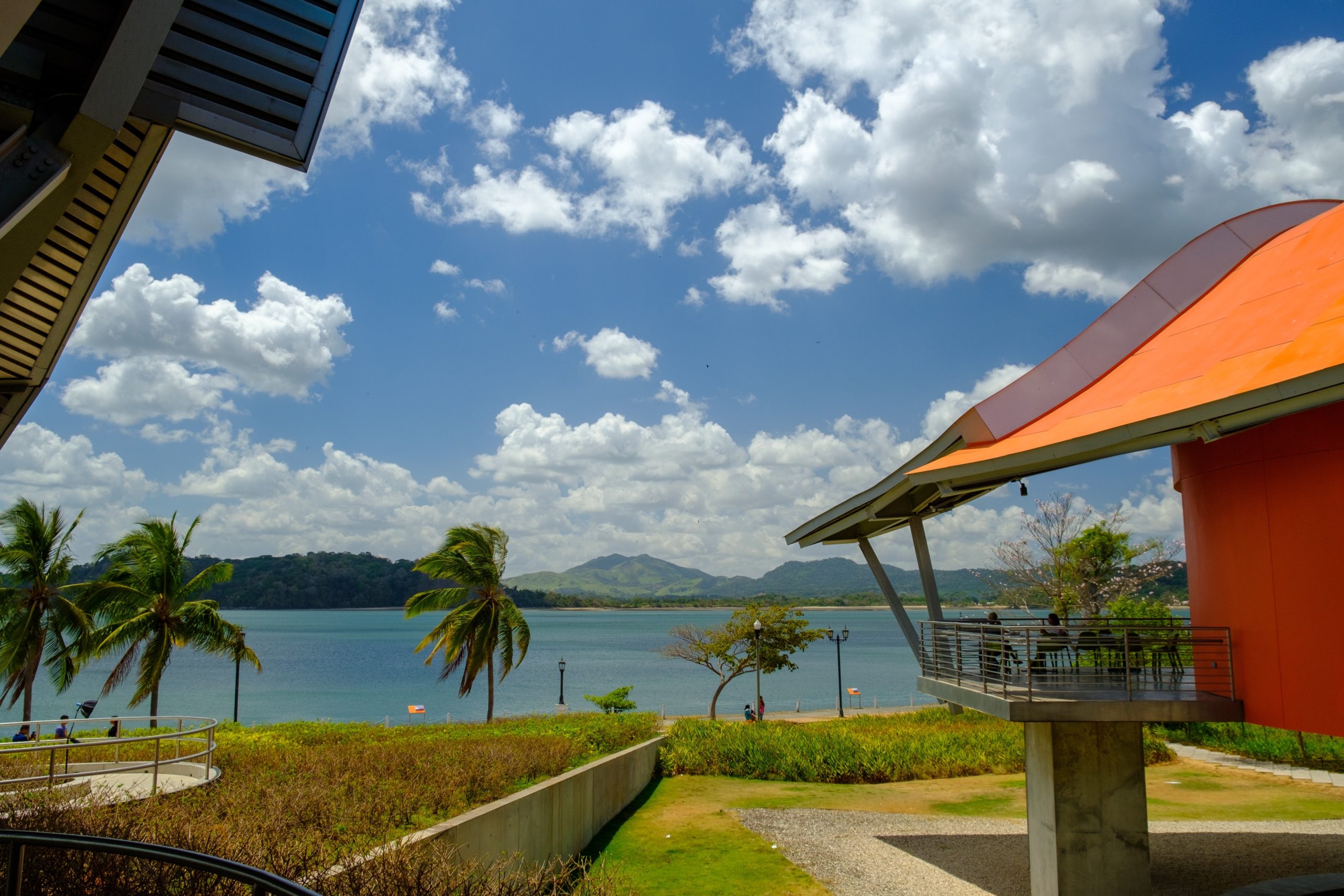
Finally, if you fancy a short walk through nature, you can head towards “The Park of Biodiversity”. This exhibit is a collection of gardens starring more of Panama’s incredible biodiversity. The location is on the same lot as the Biomuseo, and free with your admission.
While a novel could be written about the contents of this museum, the best way to learn more is to visit yourself! As stated before, it’s an absolute must and hopefully, now you understand why. The location, the building, and the contents themselves create an unforgettable experience. Perhaps also an important experience for any Panama newcomers. Thanks for reading! All the best from Panama.


Allan Shif
on said
I will be visiting Panama April 15 – 20 and going to the Biomuseo on April 16. As the founder of the Climate Change curatorship at the Royal Ontario Museum I would be pleased to meet someone from the Biomuseo.
Thank you.
Allan Shiff.